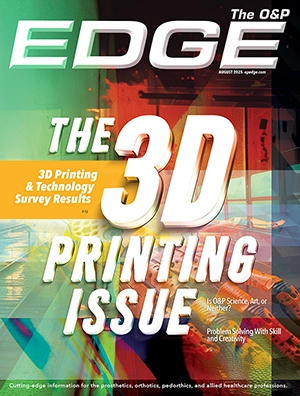The O&P company I worked for when I began my orthotic residency stocked only three styles of orthopedic shoes: a loafer for women and a loafer and work boot for men. I assumed that patient dissatisfaction with the shoes was related to the limited options. In subsequent jobs, I began offering patients more options by allowing them to select their preferred shoes from manufacturers’ complete catalogs. After finding that patients seemed to inevitably choose styles that were not optimal for their conditions, I created a condensed catalog comprising clinically appropriate designs and allowed the patients to choose from among those options. To my surprise, patient dissatisfaction did not decrease significantly, and much time was required during encounters to convince patients about the merits of the footwear their physicians had prescribed. It seemed obvious to me that, given the significant benefits of therapeutic footwear, their appearance should be a much lower priority for the patients. My initial naivete regarding the prioritization of aesthetic over clinical factors began to wane, and I became resigned to the reality that vanity appeared to be more important to many patients than function and wound prevention.
Many practitioners may be similarly resigned and may struggle as I did with suppressing frustration at this clinical reality. Practitioners can usually quickly determine, based on visual assessment and experience, which shoe designs and features are most appropriate for specific patients, while patients insist on those that are less appropriate. Even after comparing measurements of patients’ feet with their current footwear, a protracted discussion of the disadvantages of their preferred designs and the benefits of proper shoe sizing, depth, and width is often required. Clinicians and patients often use different criteria for determining what is appropriate and acceptable, and the resulting conflict consumes time and can reduce treatment effectiveness.
Support authors and subscribe to content
This is premium stuff. Subscribe to read the entire article.




